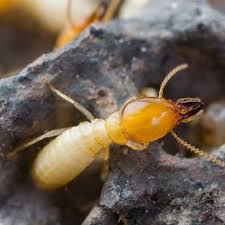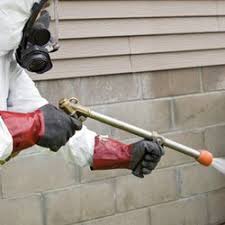The Greatest Guide To Termite Control Medicine Names
The technology of non repellents such as Taurus SC is an advancement over other termite insecticides that are only repellent obstacles like Talstar P, Cyper TC or Permethrin 36%.
With termiticides, the smallest of openings in the treated soil can be detected and exploited by the termites to gain entry into the building. This is a significant shortcoming of the more traditional chemicals used for control.
For many decades, the traditional method of controlling subterranean termites was to apply a pesticide, known as a termiticide, to the ground. This chemical treatment depended on the application of a barrier around and beneath the structure designed to block all possible routes of entry. Any weeds attempting to penetrate through the soil were murdered or spilled. .
However, there are many obstacles to forming such a barrier. Many possible termite entry points are hidden behind walls, floor coverings, and other obstructions.
Even where access for termite treatment is possible, it is difficult to uniformly wet soil and achieve thorough coverage. A typical"barrier" treatment may involve hundreds of gallons of solution injected into the ground along the foundation, beneath concrete slabs, and within foundation walls. Considering that termites can tunnel through small untreated gaps in the soil as thin as a pencil lead, it's understandable why the compound liquid termite treatments have failed to fix termite problems occasionally. .
Some Known Incorrect Statements About Termite Control Meaning
Many termiticides are not as secure in the dirt as termiticides which were manufactured prior to 1989. Chlorinated hydrocarbon insecticides (termiticides) like chlordane, aldrin, lindane, etc. were known to have tremendous stability in soils and lasted much longer than the present termiticides; the very same attributes that made them good termiticides also made them environmentally unsafe.
There are many different insecticides currently employed by pest control operators for soil treatments. All are safe and effective when used according to label directions. The insecticides remain effective in the dirt for around 5 to 10 decades. Each item has slight advantages and disadvantages.
Termite treatments demand a volume of termiticide. For example, a single-story house that's 1200 sq. ft. (40' x 30') can require 112 gallons of diluted termiticide just to treat the soil along the foundation walls (inside and out). The total gallons needed may exceed 150 gallons depending upon the construction of the house. .
Some Of Termite Control Medicine Names
Termites"Bite" into Pocketbook by Barb Ogg, PhD, Extension Educator, Lancaster County Extension Office and Dennis Ferraro, Extension Educator, Douglas County Extension Office, talks about the amount of termiticide needed to perform the job properly.
The physical and chemical nature of the soil surrounding your house can affect the effectiveness of the compound's stability with respect. Soil clay content, pH, Organic matter content, particularly organic carbon content will greatly influence the speed of breakdown of the termiticide in soil.
You can consult your local land grant extension entomologist to appraise your soil. Samples can be inexpensive, some may be free, allowing you a more informed option.


Facts About Termite Control Medicine Names Revealed
Homes and other buildings can be pretreated to protect them against termite attack in the time of construction. All wood can be treated easily with Timbor, it is going to last the life span of the wood.
After the footings are poured, and the foundational walls/ piers have been constructed, apply the termiticide such as Taurus SC. Create a trench in the soil approximately 6-12 inches wide and 6 inches deep adjacent to the foundation.
Soil on either side of the exposed foundational walls and dirt surrounding should be soaked down to the foundation footing at the labeled rate.
Employ at the check this site out diluted pace. Poured in with a watering can or bucket(5 gallons) is much easier than using discover this info here a sprayer, pouring 4 gallons per 10 linear feet. Pour the finished solution in the trench covering 10 linear feet. Once the trench is filled with 4 gallons of the finished mixture, pay the trench back with the dirt that was removed.
9 Easy Facts About Termite Control Medicine Names Shown
No need to dig the trench any deeper than the top of the footing. .
Soil at the base of the trench can be loosened with a spade or iron pub to allow penetration.
For outside basement walls (where the footing is heavy ) most pest control operators employ the compound by injecting it along the foundation. They inject it thru a rod attached at the end of the hose in place of a soil nozzle. This technique is known as rodding. The result is a continuous chemical barrier from footing to surface. .